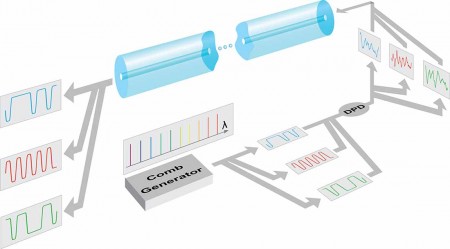June 30, 2015 – Just in case you were worried that we didn’t have enough data traveling through fiber optic cables, engineers at University of California, San Diego, have upped the ante. In a recent series of experiments engineers at the university have been able to increase both optical signal power and distance. For the Internet backbone which is largely built on fiber optic cables, this has significant ramifications.
Before this breakthrough fiber optic signals ran into a limit. Only so much power could be added to a signal before it became distorted. The solution was to put repeaters in place to keep the signal from breaking up. A repeater by definition is a device that regenerates the signal. For the Internet this means an infrastructure of supercomputers strategically located at network nodes regenerating what is being transmitted.
The university team found a way to add more power and eliminate the need for repeaters. This translates to moving a signal farther and increasing the volume of signals traveling along the fiber optic strands.
How far? In a series of experiments the engineers sent information 12,000 kilometers without regeneration. The implications on Internet infrastructure will be significant. Eliminating repeaters will make the Internet cheaper to operate while increasing the amount of information transmitted through the pipe.
So what did these University of California engineers discover to achieve their success? It is called a wideband frequency comb. The analogy of a hair comb may help explain this. Every hair comb has many tines that generally are equally spaced apart. That makes them useful when combing through tangles in your hair. Well a frequency comb separates light pulses into discrete, equally spaced “tine-like” elements. Thus information traveling through a fiber optic cable is discrete and doesn’t become entangled. The engineers liken their discovery to tuning all the instruments in an orchestra before beginning a concert. The frequency comb synchronizes all the instruments and compensates for all other signals traveling through the fiber optic cable. Their experiments allowed them to increase the power 20 times normal and still maintain information integrity over long distances.
The results of their work appears in a paper published on June 26, 2015 in the journal Science, and entitled, “Overcoming Kerr-induced capacity limit in optical fiber transmission.”
For the telecommunications industry this is a very big deal. The engineers have filed a patent covering their method and application to transmission of data.
















